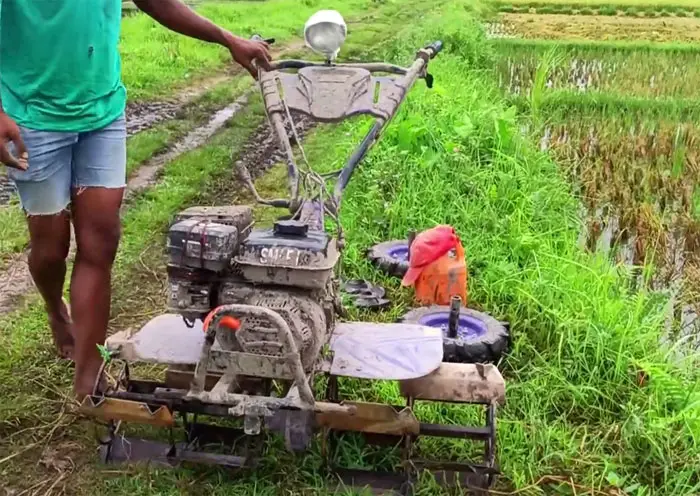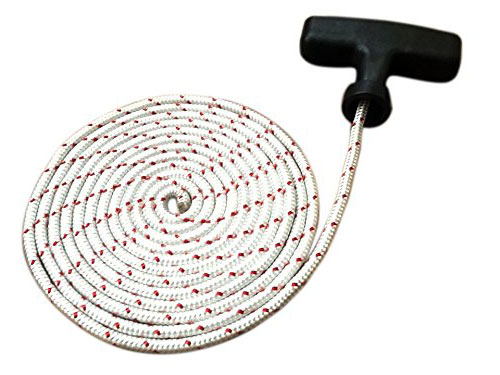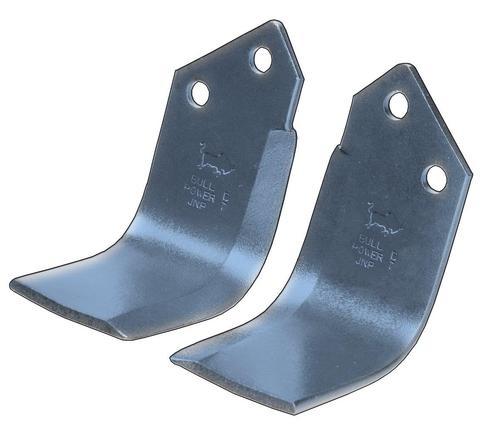Investing in your own garden rotavator is by no means a cheap thing to do. So once you have committed, you need to protect your investment, take excellent care of it, and maintain it properly.
You don’t need to spend many hours taking care of your piece of garden machinery, but just a few minutes after use will pay you dividends in the long run by prolonging the working life of your investment.
Always Clean Dirt and Mud After Use
When you first buy your tiller, it will come with an operator’s manual, which you should read and familiarize yourself with before you even begin to use the machine. After every use, you must always clean off any muck and dirt from the machine.
Dirt and mud hold water, and it’s more likely than not that you will use your rotary hoe very Infrequently, so when stored covered in water retaining muck, you are increasing the likelihood of rusting and corrosion on your machine. You should always pay particular attention to the blades of the machine, and the best cleaning option for you here is to use a high-power hose.
Other maintenance tasks you should perform on your rotavator are always checking the air pressure on the tires to make sure that they are inflated adequately enough. Because a rotavator is a machine, it has plenty of moving and working parts. It is imperative to keep these parts properly lubricated to prevent them from seizing or rusting up.
If you happen to break a blade, always replace it as soon as possible and always check the spark plug, especially if it has been sitting idle for some time. Clean the spark plug and, if need be, replace it.
These are just a few basic maintenance tips but always check out the operator’s manual for more tips. And if maintenance is not your thing, then you can always drop your unit off at a maintenance shop for a full service once a year.
Thorough Maintenance Of The Gas Powered Rotavator
Small Engine Maintenance
If you have opted for a petrol rotavator instead of an electric rotavator, you have a small engine that requires regular maintenance and servicing.
Before using your rotavator
- You should always remove any debris, such as old leaves, away from the air intake screen. Check the areas as well for debris around the oil filter and any general linkage spots. You can do this by hand, but a better method is to use a stiff bristle brush.
- Behind the air intake screen will be the flywheel fins. Remove the air intake screen and give these fins a good brushing as well.
- If your rotavator is a 4 stroke engine, you must always check the oil levels before using it. If they are low, then add the necessary amount of oil.
Twice a year service
- If you have a 4 stroke engine, then you need to change the oil twice a year. Drain out any old oil through the drain plug and dispose of it correctly. Add the new oil. This is not required if you have a 2 stroke model.
- Get yourself some lightweight oil or silicone lubricant and apply it to any exposed control cable and pivot points such as the clutch and throttle controls.
- Take out the air filter and clean it or replace it if that is what is required.
Replacing A Recoil Starter Rope
This is not a frequent maintenance task, but the time will come when maybe you need to change your recoil starter rope. You can, of course, have it done professionally, but the task is simple enough, and when done by yourself, you will save quite a bit of money.
To do this, you must first disconnect the spark plug cable. This is for safety reasons. The next step is to disengage the throttle cable and remove the casing to access the starter. The handle on the rope is usually held in place by a knot, so undo this knot and remove the handle. Unfasten the rope at the other end from the starter. Use pliers or a cutter of some sort if required.
Take the new rope and put a knot at one end of it. Tighten up the pulley anticlockwise and hold it firmly in place. Thread the unknotted end of the rope through the pulley hole and housing hole and pull it taught.
You can then slowly release the pulley allowing the rope to wind around the pulley. Attach the handle back to the end of the rope and reconnect the spark plug cable. As simple as that, and your rotavator is ready to be started again.
Rotavator Not Working Properly?
Some of the issues that you might get for your rotavator are:
- The machine won’t start.
- It gets cuts out after starting.
- It won’t rev up.
- It gives out a lot of black smoke.
These are common factors that affect a rotavator and are usually connected with lack of or poor maintenance. You have invested good money in a rotavator, so it is well worth taking good care of your investment. So always:
- Ensure that you have good quality or correctly mixed fuel.
- The air filter needs to be clean and unblocked at all times.
- The carburetor has to be clean and unblocked.
- Spark plugs do not last forever and need to be replaced regularly.
- Fuel lines need to be checked frequently to ensure that they are not partially or fully blocked.
After following these maintenance pointers regularly, you will find that your rotavator will run more freely and be less prone to any failures.
Rotavator Blades
Proper maintenance of the rotavator blades is essential if you wish to get the best performance from your garden rotavator. If you have a new machine, then the blades will be in perfect and pristine condition. However, with a second-hand machine, you may have blades that are cracked or even broken.
In either situation, you must always check the blades to ensure that they are in proper working condition.
If you discover that one or more of the blades is cracked or damaged after using your tiller, you must replace it or them immediately.
Before using any cultivator, you should always check the rotavator blades to ensure that they are correctly affixed to the machine. Check each screw to ensure that it is fully tightened.
It’s not uncommon for rotary hoe blades to begin rusting. This eventually can weaken them. So treat the rust, but if the problem persists or worsens, then change the blades.
After each use with your rotavator, always clean the blades. This can be easily done using a wire brush and a power hose. Take good care of your rotavator blades, and they will last a long time, providing you with excellent continual gardening service.
Storing A Rotavator
When it comes to the maintenance of your rotavator, storing it correctly is an important aspect. It is unlikely that you will be using the rotary hoe during the winter months, so that it will be sitting idle for at least a couple of months.
If you do not store it correctly, you may experience it not starting or working correctly the next time you pull it out for work. So do store your rotavator correctly.
The first step is to clean it thoroughly. You can do this with a high-power hose and just water to remove any muck or dirt. Then take a cloth and thoroughly dry the unit.
Next, you do not want to store your rotavator with any fuel in it. The fuel could get contaminated. So drain off any fuel from the tank. Then, drain the fuel from the fuel lines and carburetor.
The best way to do this is to actually start the tiller and allow it to run until it stops on its own due to fuel starvation.
Finally, remove the spark plug and apply a rust inhibitor to the combustion chamber. The rotavator is now ready to be stored. Cover it with an old blanket and allow it to hibernate peacefully. The next time you pull it out for service, it will be ready to go in tip-top order.




